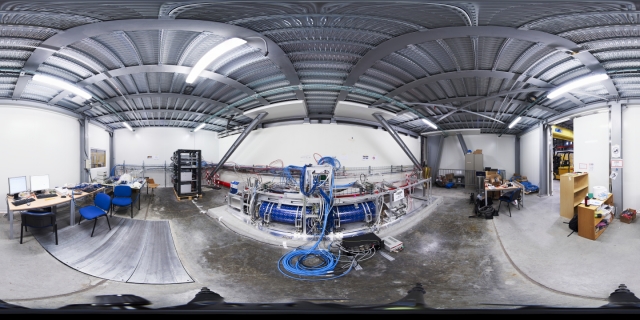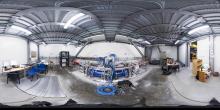In an article published this week in the journal Physical Review D, the FASER experimental collaboration reported on the possible first historic observation of neutrinos at the Large Hadron Collider (LHC). One of the initiators of this experiment Was Dr. Sebastian Trojanowski from the International Research Agenda AstroCeNT at the Astronomical Center. Nicolaus Copernicus PAS and the National Center for Nuclear Research (NCBJ).
Neutrinos are undoubtedly the most difficult particles known to us to study directly. To detect them, detectors the size of large buildings or even an iceberg are used, and research is carried out over many years. In innovative studies of this type at the LHC, however, the size of the experiment can be significantly reduced by using a highly focused beam of neutrinos produced in the collider. The preliminary observations described in the article were made using a handheld detector with a cube size of 10–20 cm, left in place for just a few weeks. The observation concerns only a few collisions characteristic of neutrino interactions, but the way in which it is made is more significant.
„The purpose of this pilot study Was to demonstrate the effectiveness of the chosen neutrino search method under LHC conditions " – says Dr. Jamie Boyd, one of the experiment leaders – „We are excited to see that such a small device, which is only about 1% of the total size of the planned detector, made it possible to observe the first candidates for neutrino events in the history of particle colliders. „
In a work published earlier this year in the Journal of High Energy Physics, written jointly by NCBJ PhD student Krzysztof Jodłowski and Dr. Trojanowski, it Was also noted that the combination of high energy of LHC neutrinos and the unique capabilities of the FASER detector to observe the details of their collisions, opens up a new perspective for the study of non-standard neutrino interactions. „We are glad that a dozen or so other articles have taken up this topic after our work. Search for the so-called new physics in neutrino interactions have become one of the important goals of this new research program”, says Dr. Trojanowski.
The main phase of the FASER experiment is expected to start with the new work period at the LHC in the coming year. During the several years of operation of the experiment, scientists expect to observe thousands of neutrino events. It will also allow us to indirectly better understand the nature of the forces that bind atomic nuclei and the interactions leading to spectacular collisions of cosmic rays with the Earth’s atmosphere. These efforts will also fit into the very broad subject of neutrino research, which is carried out in many centers around the world, including in the Warsaw Neutrino Group operating at NCBJ and at the University of Warsaw.
Additional information:
The FASER experiment Was proposed by a group of several CERN scientists, in which Dr. Trojanowski played a significant role. We reported this in earlier communications: https: //www. ncbj. gov. pl/aktualnosci/faser-nowy-eksperyment-lhc-mocnym-na …
Among other things, for this achievement, Dr. Trojanowski Was awarded the Polityka Scientific Award in the field of exact sciences this year: https: //www. ncbj. gov. pl/aktualnosci/dr-sebastian-trojanowski-zdobyl-tym …
Original work:https: //journals. aps. org/prd/abstract/10.1103/PhysRevD. 104.L091101







